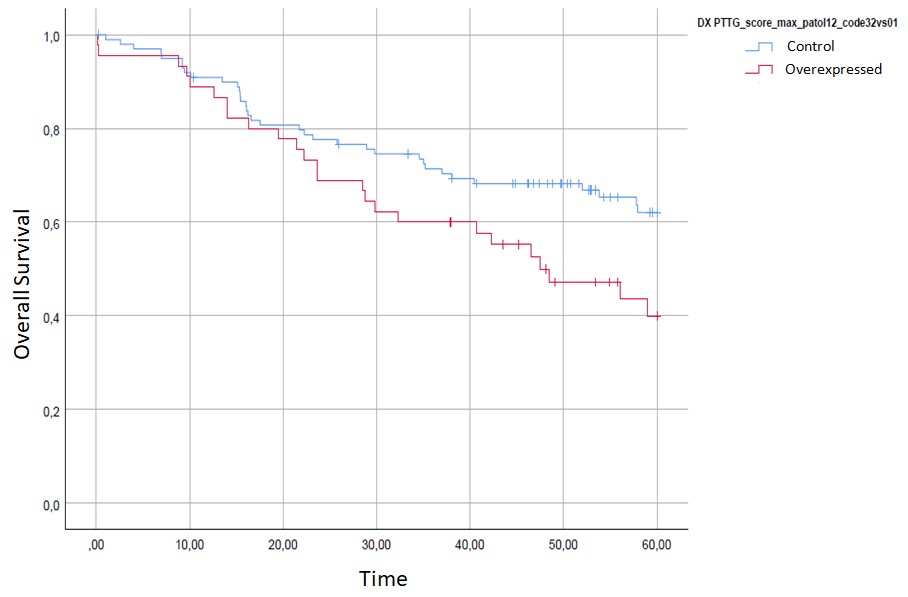Pituitary transforming tumor gene (PTTG). A new biomarker for lung adenocarcinoma?
PO-1445
Abstract
Pituitary transforming tumor gene (PTTG). A new biomarker for lung adenocarcinoma?
Authors: Pedro Romero Pareja1, Elias Gomis Selles1, Oscar Muñoz Muñoz1, Imanol Paguey Garrido1, Blas David Delgado Leon1, Jose Luis Lopez Guerra1
1Virgen del Rocio University Hospital, Radiation Oncology, Seville, Spain
Show Affiliations
Hide Affiliations
Purpose or Objective
The pituitary tumor transforming gene (PTTG) encodes a protein called securin. Overexpression of mRNA has been associated with higher mortality at 5 years in patients diagnosed with non-small cell lung cancer (NSCLC). Our team studies the validation of this association by analyzing securin protein expression levels and survival in NSCLC patients.
Material and Methods
We reviewed diffferent bibliographies about several gene biomarkers and the prognostic role of mRNA overexpression in NSCLC, both in vitro and clinically. Subsequently, we recruited a cohort of 285 patients from our center diagnosed with NSCLC for whom tumor tissue samples were available. PTTG levels were examined by immunohistochemistry. Two independent pathologists, blinded to clinical data, categorized PTTG expression.
Results
Our cohort was characterized by a median age of 68 years and a male gender distribution (77.2%). The stage of the disease at diagnosis, stage III stood out (61%), followed by stages I (24%), IV (8%) and II (7%). Most of the patients underwent surgery (90%), while throughout the process 86% received radiotherapy.
PTTG mRNA overexpression was associated with lower overall survival (OS), without statistical significance (p=0.151). When analyzing the cohort by histological subgroups, lower OS was observed in patients diagnosed with NSCLC with adenocarcinoma histology (N=145) and high expression of PTTG (p=0.032) (Figure 1).

Conclusion
In our cohort, PTTG overexpression is associated with a higher risk of mortality in NSCLC, with statistical significance in those cases with adenocarcinoma histology. This response biomarker may be useful to predict prognosis and as a therapeutic target in NSCLC.